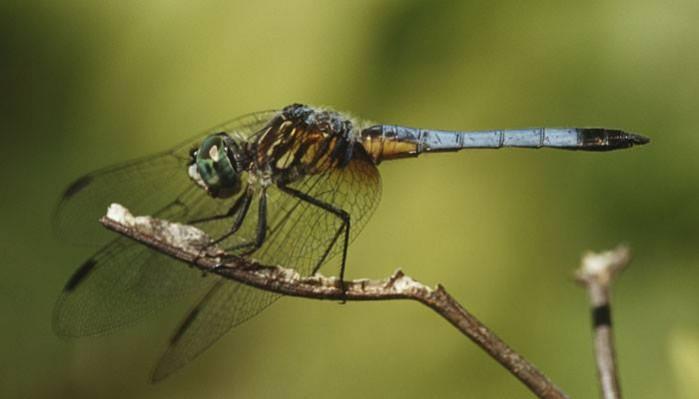
Female moorland hawker dragonflies use a rare technique to get rid of their unwanted admirers, they simply pretend to be dead.
Also Read: Stealthing: Beware of this latest trend of sexual assault!
This smart trick was discovered by Rassim Khelifa, an entomologist from University of Zurich, Switzerland, when he was analysing the larvae of moorland hawker dragonfly -- scientifically known as Aeshna juncea – in Swiss Alps a few years back.
For carrying out his experiment, Khelifa was waiting for female dragonflies to lay eggs near a pond. He suddenly saw a female dragonfly crash to the ground and lying upside down motionlessly.
Khelifa then went close to check and found that it was a female dragonfly. As he went closer to her, she flew away swiftly.
"I expected that the female could be unconscious or even dead after her crash landing, but she surprised me by flying away quickly as I approached," Khelifa was quoted as saying by the Ecological Society of America.
Khelifa spent more time on his research before coming to the conclusion that female moorland hawker dragonflies deceit. He studied the mating habits of the species at two ponds, which he defined as "unpleasant."
The mating process of the dragonflies is known as tandem linkage, in which the male intercepts the female dragonfly aggressively and mate with the female by flying while being joined. They also copulate by settling on a leaf.
The male and female dragonflies need to twist themselves to mate as male sex organ is present near his chest, whereas the female reproductive tract is present at her abdomen's long tip.
In numerous dragonfly species, the male usually stays around the female dragonfly after mating to keep other males at bay. But that is not the case with moorland hawker dragonfly.
"After copulation, the male detached himself from the female and flew away. The long grass around the ponds provides safety to female dragonflies," Khelifa said.
"When the female tried to leave the oviposition site, males always chased her on the air," added.
Khelifa analysed 35 female dragonflies out of which 31 fell on the ground when they were chased by males; out of these 27 faked death and 21 of them succeeded in saving themselves from the sexual predators.
Khelifa explained that the 'drop and freeze' behaviour seen in this species is more about simply hiding than keeping the male away.
"In addition, that males could not detect the motionless females highlights the importance of movement for males to detect females, which is the case for many odonates," he stated.
Very few arthropods like robber fly and praying mantid species are known to use this phenomenon to avoid unwanted mating.
"It would be interesting to know whether this scarcity is true or just an artefact related to the lack of behavioural investigations or difficulty in detecting this behaviour," Khelifa concluded.








